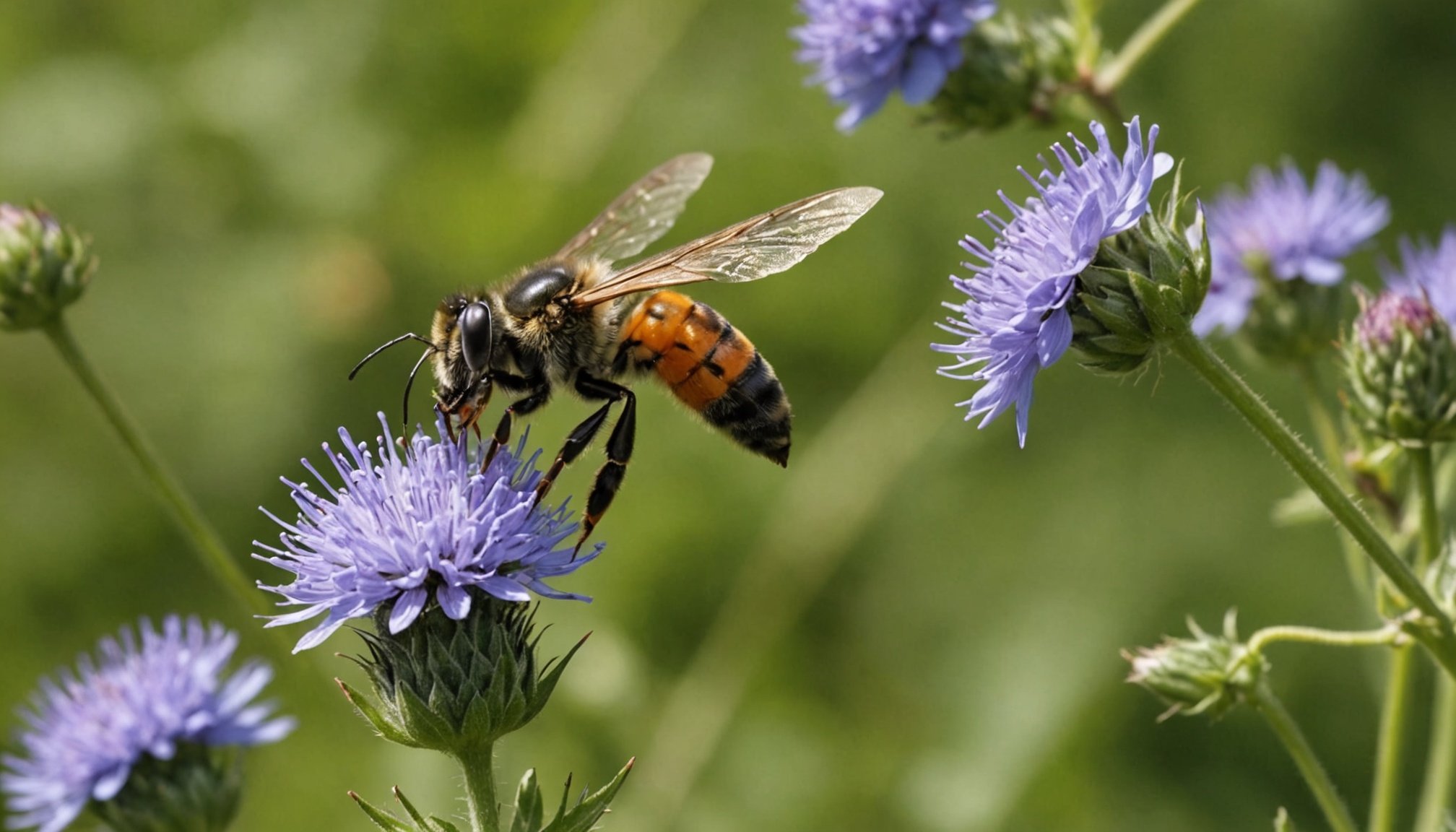Overview of Current UK Pesticide Regulations
The UK has a rich history of evolving pesticide regulations with a focus on environmental protection. Initially established in the mid-20th century, these regulations aimed to balance agricultural productivity with public and ecological health. Over time, the emphasis on pollinator safety has increased, especially with the growing awareness of their critical role in the ecosystem.
Several key regulations specifically address pollinator protection. For instance, certain neonicotinoids, known to harm bees, have been restricted, reflecting the UK’s commitment to safeguarding these essential species. Additionally, guidelines encourage practices that minimise pesticide exposure to pollinators, such as applying treatments during times when bees are less active.
Also to see : New UK Hunting Laws: Safeguarding Foxes and Hares for a Brighter Future
Moreover, the regulations have undergone recent amendments to align with scientific advancements and environmental priorities. These changes often focus on reducing the environmental impact of pesticide use, ensuring that new products undergo rigorous testing for their effects on non-target organisms. This adaptive approach demonstrates the UK’s resolve in maintaining stringent controls that provide a safety net for pollinators while supporting agricultural needs.
The implications for these amendments are substantial. By continuously adapting the regulatory framework, the UK aims to foster a secure environment for pollinators, which are indispensable for biodiversity and food security. This proactive stance underscores the importance of pesticide regulations UK in driving sustainability and ecological balance.
This might interest you : Enhancing City Ecosystems: The Crucial Impact of UK Community Gardens on Nature Conservation
Recent Amendments to Pesticide Regulations
Recent regulatory changes in pesticide amendment policies aim to enhance sustainability and mitigate the adverse effects of pesticides on the environment. These amendments increasingly focus on the pollinator impact, recognising the role of insects such as bees in maintaining ecological balance and supporting agriculture.
One significant change is the imposition of stricter guidelines on the usage of specific chemicals known to harm pollinators. By doing this, the regulations try to curb the decline in pollinator populations, which is crucial for the pollination of many crop species. The amendments also encourage the adoption of alternative, less harmful pest control methods, nudging industries towards more sustainable practices.
A comparison with EU pesticide regulations reveals that both regulatory bodies pursue a trend towards heightened environmental responsibility. However, the EU tends to enforce more rigorous standards, often leading to quicker implementation of bans on hazardous substances. Meanwhile, other regions might employ a more gradual approach, balancing economic considerations with ecological needs.
This shift towards sustainable pesticide regulation reflects a broader environmental consciousness, prompting the agricultural sector to adapt and innovate in safer, more effective ways to protect crops while preserving the environment.
Scientific Evidence Supporting Pollinator Protection
Numerous pollinator health research studies have highlighted the adverse effects of pesticides on pollinators. These pesticide impact studies specifically focus on how various chemicals disrupt crucial ecological functions. How exactly do pesticides impact pollinators? They impair neurological functions, hinder reproduction, and even cause death. Research has consistently demonstrated that pesticides contribute significantly to pollinator decline.
The correlation between pesticide use and pollinator decline is especially alarming. Studies indicate that pollinators exposed to common pesticides show diminished foraging efficiency and navigation skills. This, in turn, severely impacts their ecological roles, such as pollination, which is pivotal for the survival of many plant species and ecosystems.
However, why is preserving pollinator biodiversity so crucial? Simply put, a rich variety of pollinators ensures robust ecosystems and agricultural productivity. Scientific research emphasizes that maintaining an ecological balance with diverse pollinator species aids in plant pollination, disease resistance, and climate adaptability. These benefits underscore the urgency in protecting pollinator diversity for environmental sustainability and agricultural health.
Through continued research and awareness, understanding of the intricate relationship between pesticides, pollinators, and biodiversity can lead to more sustainable pest management solutions. This will help balance agricultural needs with ecological well-being, ultimately supporting global food systems and natural habitats.
Successful Case Studies in Pesticide Management
Exploring successful case studies in pesticide management can highlight the innovative strategies employed by farms. These stories provide valuable lessons in implementing environmentally friendly solutions without compromising productivity.
One notable example is a farm in California that adopted pollinator-friendly strategies. By integrating cover crops and maintaining wildflower borders, the farm greatly enhanced its ecosystem’s health. Such sustainable farming practices not only boosted pollinator populations but also improved crop yield over time, proving that environmentally sound practices can provide economic benefits.
Another case hails from Europe, where a vineyard embraced sustainable farming practices to reduce pesticide use drastically. Through an integrated pest management system, they adjusted crop schedules and used natural predators to control pest populations. This approach minimized environmental impact and received recognition as a model for other vineyards, emphasizing that pesticide regulation can be both practical and successful.
The lessons learned from these case studies underline the importance of adaptability and innovation in pesticide management. Farms that implement sustainable practices often find unexpected benefits, such as improved biodiversity and soil health. These success stories encourage wider adoption of sustainable tactics, illustrating tangible rewards beyond mere compliance with regulations. They demonstrate the effectiveness of pollinator-friendly approaches and strategic regulations in enhancing both farm productivity and environmental health.
Stakeholder Perspectives on Pesticide Regulations
Understanding stakeholder views sheds light on the complexities of pesticide regulations. Farmers often highlight the necessity of pesticides for maintaining agricultural productivity. They express concerns that overly stringent regulations could hinder crop yields and economic viability. Farmers advocate for regulations that are scientifically grounded and consider the practicalities of farming life. The goal is to strike a balance where crop protection doesn’t become an overwhelming hurdle.
From the standpoint of environmental advocacy groups, the emphasis is on the health implications for ecosystems and humans. These organizations argue for stricter controls to prevent potential ecological damage and advocate for sustainable farming practices. Scientists contribute to this conversation by providing data on pesticide impacts, enhancing our understanding and aiding in formulating balanced policies.
The challenge lies in reconciling these diverse opinions, balancing agricultural productivity with the imperative of protecting environmental health. It’s a delicate dance: ensuring that food production remains efficient while safeguarding natural resources. Effective regulation will require collaboration, fostering understanding between stakeholders to craft solutions that nurture both the earth and its inhabitants. This dynamic interplay between farmer opinions and environmental advocacy aids in the development of informed, practical regulations.
Innovative Strategies for Protecting Pollinators
The harmony between sustainable agriculture and pollinator conservation hinges on the successful integration of innovative methods. Recent proposals underscore the importance of innovative strategies aimed at creating pollinator-friendly environments. One such approach focuses on blending traditional farming practices with modern technological advances. This involves utilizing indigenous crop practices that naturally support pollinator communities, alongside cutting-edge technology that enhances their effectiveness.
A key aspect of these strategies is the role of technology in monitoring and managing pesticide use. Agricultural technologies now allow farmers to precisely apply pesticides, minimizing the harmful impact on pollinators. Sensors, drones, and satellite imagery help in identifying specific areas that require treatment, thus conserving areas crucial for pollinator habitat. This precision application represents a smart, sustainable solution that underscores conservation efforts.
Furthermore, agriculture innovations promote sustainable agriculture by incorporating crop rotation and polyculture systems which enrich the biodiversity that pollinators depend on. These systems create diverse habitats that support various pollinator species year-round.
Such strategies, when implemented effectively, can lead to a significant decrease in pollinator population declines. Integrating these sustainable methods emphasizes the commitment to fostering environments where pollinators can thrive, ensuring food security and ecological balance.
Practical Recommendations for Policymakers and Farmers
Policymakers should focus on creating comprehensive policy recommendations that address the complex challenges of pesticide use in farming. These policies need to balance agricultural productivity with environmental sustainability. To achieve this, guidelines must incorporate best practices for pesticide application that minimize harm to non-target organisms such as pollinators, essential for crop production.
For farmers, adhering to farming best practices is crucial. Engaging in practices like integrated pest management (IPM) can significantly reduce the dependency on chemical pesticides. IPM encourages a combination of biological, physical, and chemical methods to manage pests, which helps in protecting vital pollinator populations. Educating farmers about the timing and method of pesticide applications can further mitigate the negative impacts on these insects.
Collaboration among stakeholders is fundamental to improving outcomes. Policymakers, farmers, researchers, and environmental groups must work together to share knowledge and develop innovative solutions. For example, initiatives that bring together these stakeholders can lead to the development of technology that accurately assesses pesticide impact or promotes alternative pest control methods.
Ultimately, the joint efforts of all involved parties can foster sustainable agricultural systems that support both human and ecological health.
Potential Impacts on Agriculture and Ecology
Changes in pesticide regulation have both immediate and long-term effects on agriculture and ecology. Initially, such changes can lead to a notable agricultural impact by altering crop yields or increasing pest populations. Farmers may need to adjust their practices or adopt alternative pest control methods to maintain productivity.
Ecologically, the reduction in pesticide use can have profound benefits. For instance, ecosystem health may improve as ecological consequences such as reduced chemical contamination and enhanced biodiversity are witnessed. This can lead to healthier water bodies and soil quality, serving as a basis for sustainable agriculture.
Focusing on the long-term effects, pollinator populations—like bees—could experience significant recovery. Pollinators are crucial for the reproduction of many plants, affecting both agricultural productivity and natural ecosystems. With fewer chemicals in the environment, these vital insects may thrive, contributing to a more resilient and sustainable agriculture system.
However, implementing these changes requires careful management to balance the positive ecological consequences with the potential agricultural impact. Studying the long-term effects closely will ensure a strategy that supports both nature and human food production needs. Emphasizing the symbiosis between agriculture and the broader ecosystem can lead to innovative solutions for challenges posed by regulatory shifts.










